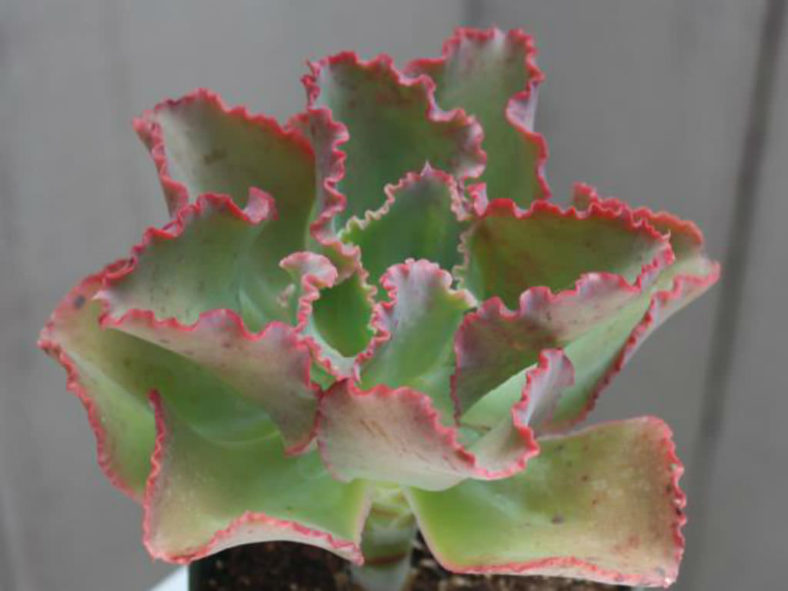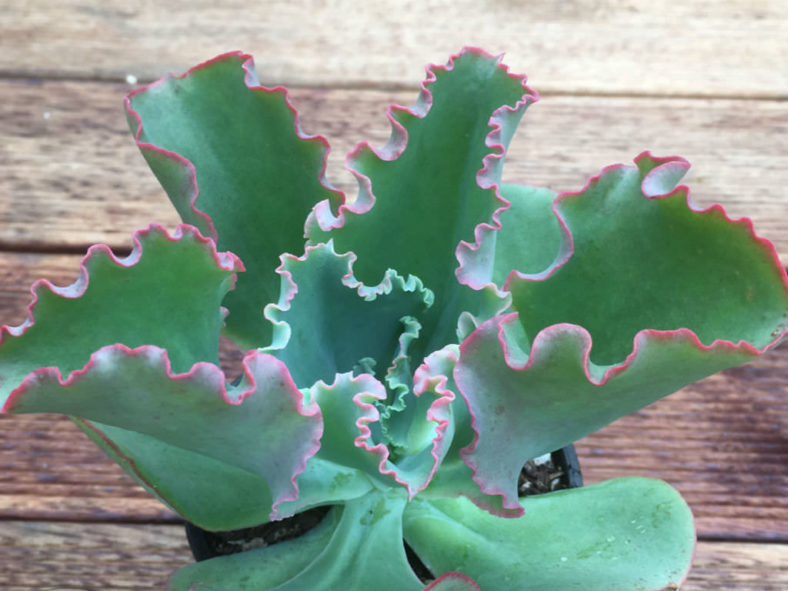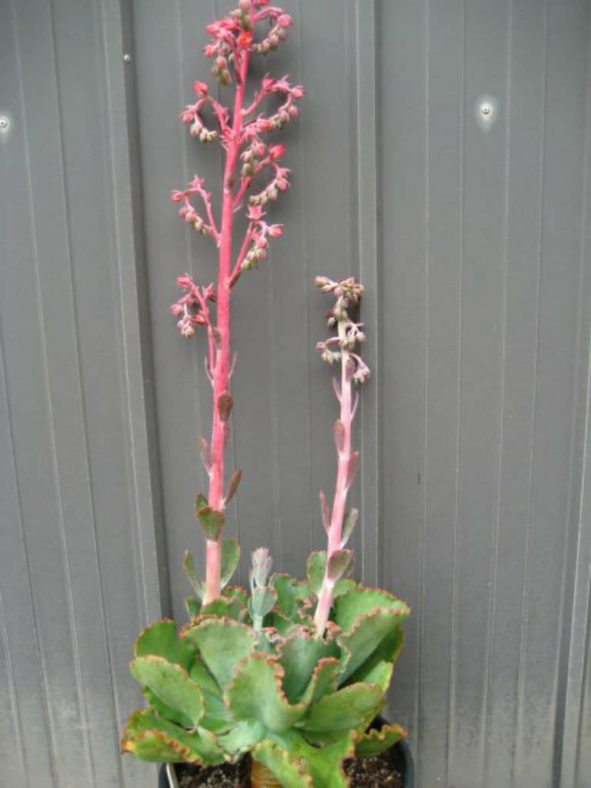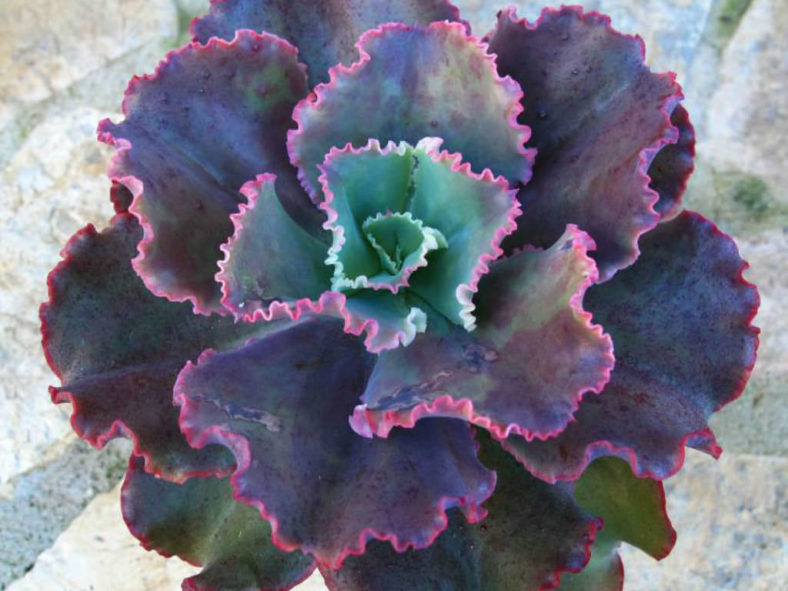Scientific Name
Echeveria 'Dick's Pink'
Scientific Classification
Family: Crassulaceae
Subfamily: Sempervivoideae
Tribe: Sedeae
Genus: Echeveria
Description
Echeveria 'Dick's Pink' is a succulent plant that forms a solitary rosette at the end of an elongated stem. The rosettes can grow up to 10 inches (25 cm) in diameter. The leaves are bluish to purple-grey with attractively contrasting red-frilled margins. The leaf color changes through the season and is more purple in winter and bluer during the growing season.
The stout flower stalks rise above the foliage in spring and summer, bearing large, light red flowers.

Hardiness
USDA hardiness zones 9b to 11b: from 25 °F (−3.9 °C) to 50 °F (+10 °C).
How to Grow and Care
Most common Echeveria species are not complicated succulents to grow, provided you follow a few basic rules. First, be careful never to let water sit in the rosette as it can cause rot or fungal diseases that will kill the plant. Additionally, remove dead leaves from the bottom of the plant as it grows. These dead leaves provide a haven for pests, and Echeverias are susceptible to mealy bugs. Finally, as with all succulents, careful watering habits and plenty of light will help ensure success.
Repot as needed, preferably during the warm season. To repot a succulent, ensure the soil is dry before repotting, then gently remove the pot. Knock away the old soil from the roots and remove any rotted or dead roots. Treat any cuts with a fungicide.
Most Echeverias can be easily propagated from leaf cuttings, although some are better from seeds or stem cuttings. To propagate a leaf cutting, place the individual leaf in potting soil for succulents and cover the dish until the new plant sprouts.
See more at How to Grow and Care for Echeveria.
Origin
Echeveria 'Dick's Pink' is of uncertain origin and is believed to be a hybrid between Echeveria shaviana and Echeveria gibbiflora parentage. However, it is not associated with legendary hybridizer Dick Wright.
Links
- Back to genus Echeveria
- Succupedia: Browse succulents by Scientific Name, Common Name, Genus, Family, USDA Hardiness Zone, Origin, or cacti by Genus
Photo Gallery
Click on a photo to see a larger version.


